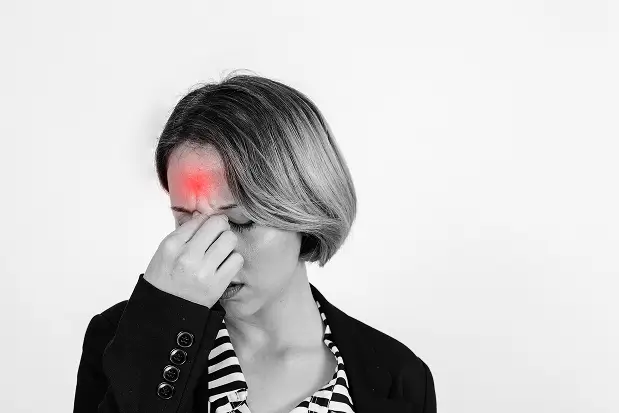Atypical Facial Pain (AFP), also known as atypical odontalgia or persistent idiopathic facial pain (PIFP), is a type of chronic facial pain that lacks a clear cause and does not fit into any specific diagnostic category. It can be a challenging condition for both patients and clinicians due to its variable presentation, elusive etiology, and resistance to standard treatments. This condition typically involves pain in the face or mouth, but the nature of the pain and its distribution is atypical when compared to more well-defined conditions, like trigeminal neuralgia or temporomandibular joint (TMJ) disorders.
What causes atypical facial pain?
The exact cause of atypical facial pain (AFP) is not well understood, but it is believed to result from a combination of nerve dysfunction and psychosocial factors. In some cases, AFP may be linked to central sensitization, where the central nervous system becomes overly sensitive to pain signals, even in the absence of a clear physical cause. Dysfunction in sensory nerves, such as the trigeminal nerve, may also contribute, though it may not be detectable with standard imaging or tests. Additionally, psychological factors such as stress, anxiety, and depression are commonly seen in AFP patients and may exacerbate or even trigger pain episodes.
In some cases, AFP can follow dental procedures, trauma, or infections like post-herpetic neuralgia (after shingles), though these links are not always clear. Temporomandibular joint (TMJ) disorders and other orofacial conditions may overlap with AFP, complicating diagnosis. However, in many instances, no identifiable cause is found, and the condition is categorized as idiopathic, meaning its origin remains unclear.
Symptoms of Atypical Facial Pain
The symptoms of atypical facial pain (AFP) can vary widely but typically involve a persistent, dull, aching pain that may feel deep or throbbing, often without a clear trigger. The pain is usually unilateral but can affect multiple areas of the face, such as the jaw, teeth, gums, cheeks, temples, or around the eyes. It may be described as burning, tingling, or shooting, but unlike conditions like trigeminal neuralgia, it is usually not sharp or stabbing. The pain can be constant or intermittent, with fluctuating intensity, and often worsens during times of stress or fatigue.
Unlike other facial pain conditions, the Symptoms of Atypical Facial Pain(AFP) are typically poorly localized, meaning patients may have difficulty pinpointing the exact area of discomfort. The pain is also non-visual, with no observable signs like swelling, redness, or changes in the facial skin. In some cases, certain activities such as chewing or talking might make the pain worse, but there is usually no clear external cause for the symptoms. The condition is often chronic, lasting months or even years, with pain that may not fully subside despite treatment for atypical facial pain.
Diagnosis of Atypical Facial Pain
Diagnosing atypical facial pain (AFP) involves a comprehensive medical history, physical and neurological exams, and the process of excluding other conditions. A thorough evaluation includes asking about the nature, onset, and pattern of pain, as well as any history of dental procedures, trauma, or systemic diseases. Imaging studies like MRI or CT scans may be performed to rule out structural abnormalities, tumors, or nerve issues. Atypical facial pain diagnosis is often based on eliminating more specific conditions such as trigeminal neuralgia, sinusitis, or TMJ disorders, since there is no definitive test for AFP.
Because atypical facial pain diagnosis is made largely through exclusion, it often takes time and the collaboration of neurologists, dentists, and pain specialists to reach a conclusion. A correct diagnosis is the first step toward identifying the most effective atypical facial pain treatment for the patient’s specific condition.

Treatment of Atypical Facial Pain
Atypical facial pain treatment is often challenging and requires a multifaceted approach. Pharmacological options include antidepressants (e.g., amitriptyline) and anticonvulsants (e.g., gabapentin) to help manage pain. Topical treatments like lidocaine patches may offer some relief, while psychological therapies, such as cognitive behavioral therapy (CBT), can help address the emotional components of chronic pain. Stress management techniques, including meditation or yoga, are often recommended, as stress can exacerbate symptoms. In refractory cases, more invasive treatments like nerve blocks or botulinum toxin (Botox) injections may be considered. However, treatment for atypical facial pain response can vary, and a personalized approach is crucial for managing this condition.
Patients may find it helpful to work closely with a pain management specialist to tailor a long-term atypical facial pain treatment strategy. Combining medical and psychological therapies can improve outcomes and enhance quality of life.
Prognosis
The prognosis for atypical facial pain varies from person to person. For some, the pain may diminish over time, while others may experience long-term discomfort. Since the condition is often chronic, patients with AFP may need ongoing management and support to help cope with the pain. Early atypical facial pain treatment and consistent follow-up care can significantly improve a patient’s ability to manage their condition and maintain a functional lifestyle.



